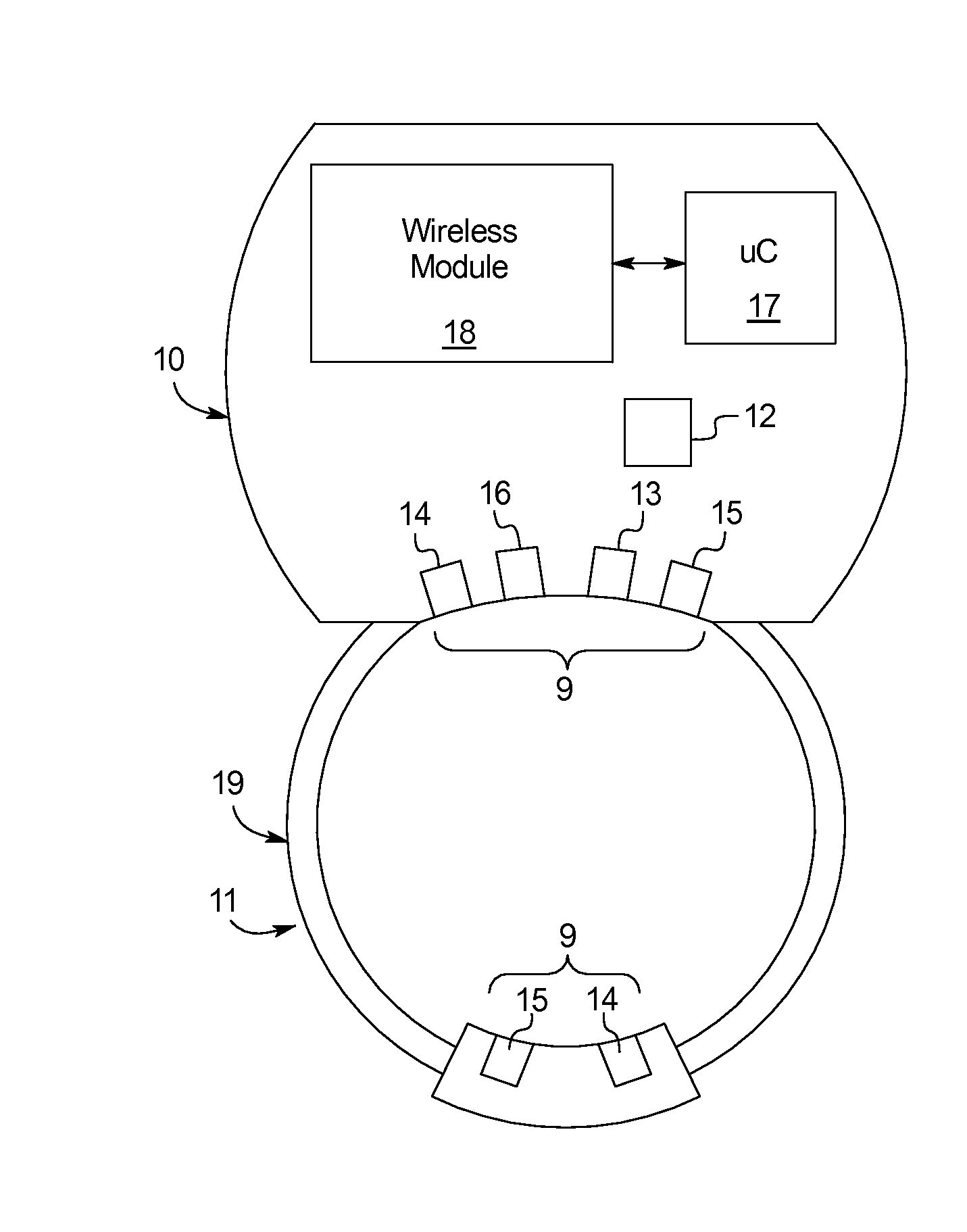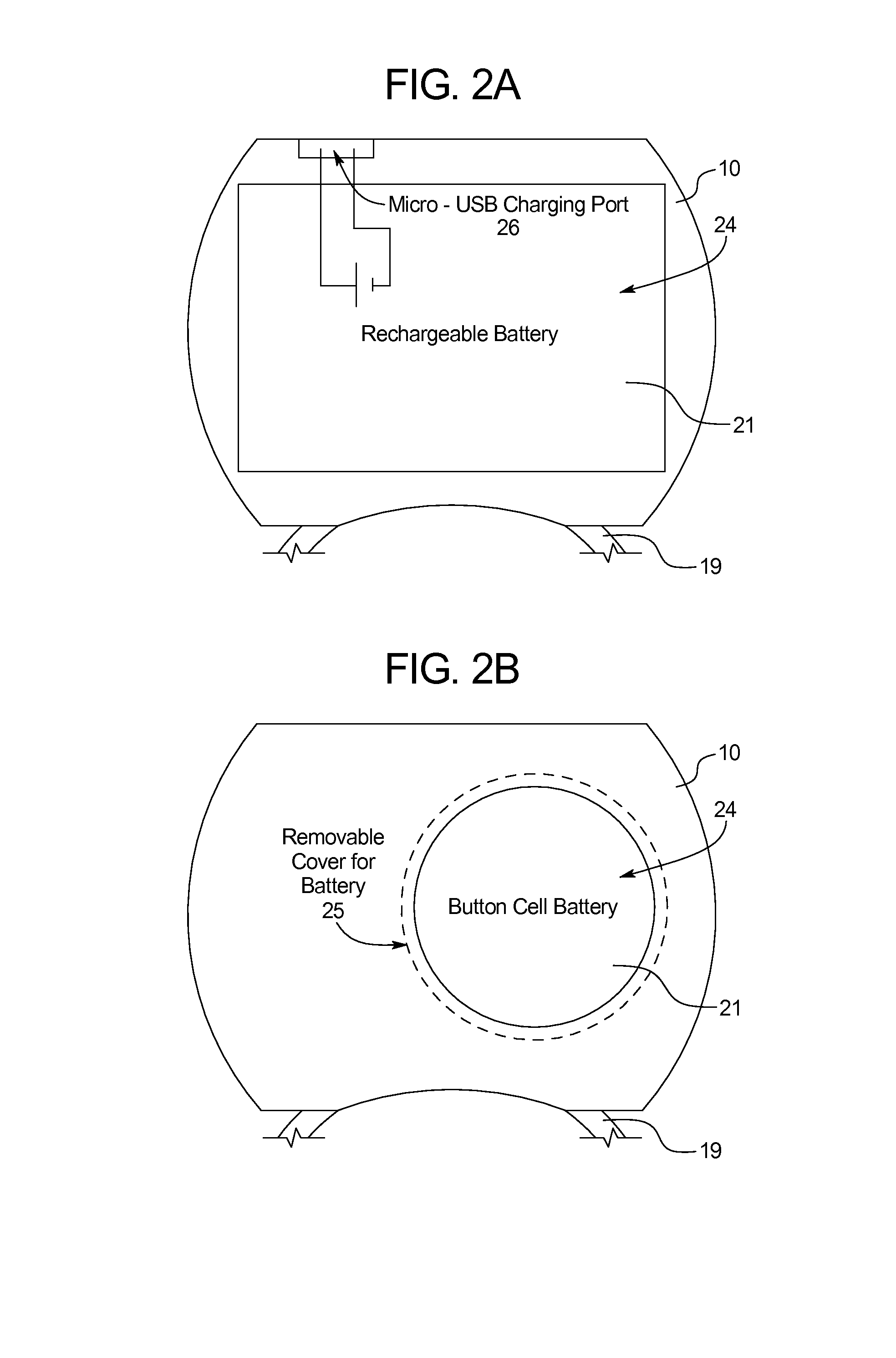Apparatus for noninvasively measuring corporal hemodynamic and mechanical parameters for the diagnosis of sexual function in men and women
a non-invasive, mechanical parameter technology, applied in the direction of tomography, catheters, applications, etc., can solve the problems of poor quality of life metrics, lack of useful diagnostic information, and inconvenient use, so as to prolong the duration of penile or clitoral erection, and maintain rigidity
- Summary
- Abstract
- Description
- Claims
- Application Information
AI Technical Summary
Benefits of technology
Problems solved by technology
Method used
Image
Examples
Embodiment Construction
[0053]The subject matter provided herein describes a system and device 5 that includes an array of sensors to monitor various biological functions and physical characteristics, namely, sexual functions. The data collected from the device 5 may be wirelessly transmitted to an accompanying microprocessor 17 on a wireless-enabled device such as a smart-phone, tablet, or other computer, wherein the raw data may be collected, stored, processed, and displayed to aid in the diagnosis of various medical problems related to male erectile dysfunction.
[0054]Specifically, the present disclosure provides a device 5 for measuring sexual function including an adjustable ring 11 forming an opening to receive a penis, at least one diagnostic sensor 6 positioned on an inner surface 7 of the adjustable ring 11, and a microcontroller 17 in communication with the at least one diagnostic sensor 6, as shown in FIGS. 1A-1B. The ring 11 may automatically couple the diagnostic sensor 6 to the penis throughou...
PUM
 Login to View More
Login to View More Abstract
Description
Claims
Application Information
 Login to View More
Login to View More - R&D
- Intellectual Property
- Life Sciences
- Materials
- Tech Scout
- Unparalleled Data Quality
- Higher Quality Content
- 60% Fewer Hallucinations
Browse by: Latest US Patents, China's latest patents, Technical Efficacy Thesaurus, Application Domain, Technology Topic, Popular Technical Reports.
© 2025 PatSnap. All rights reserved.Legal|Privacy policy|Modern Slavery Act Transparency Statement|Sitemap|About US| Contact US: help@patsnap.com



